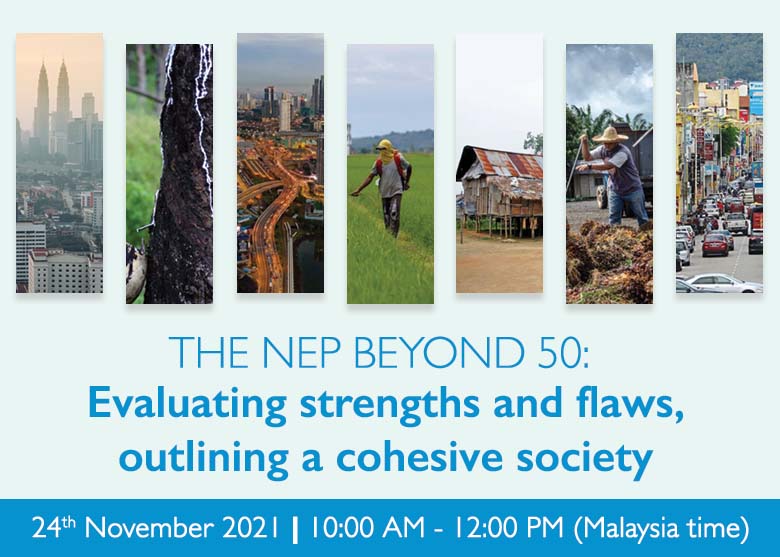
The NEP beyond 50: Evaluating strengths and flaws, outlining a cohesive society
The New Economic Policy (NEP) was conceived in 1969, which laid the foundations for a shift in development strategies for Malaysia. It was conceived with a two-prong strategy. The first prong was to reduce and eventually eradicate poverty, by raising income levels and increasing employment opportunities for all Malaysians, irrespective of race and second prong was to accelerate the process of restructuring Malaysian society to correct economic imbalance, so as to reduce and eventually eliminate the identification of race with economic function. At the core of the NEP was a policy of race-based affirmative action, a horizontal inequality policy approach, that targeted marginalised ethnic groups as a method to resolve the socioeconomic inequalities born out of British colonial rule.
In conjunction with the 50-year anniversary of this iconic policy, our project on 50 Years of the New Economic Policy aims to create public understanding around the origins and objectives of ethnic-based affirmative action policies through the New Economic Policy and its implementation through subsequent development plans. Furthermore, the question of Bumiputera identity and social cohesions will be further discussed in the context of the last 50 years. We will be launching three policy papers under this project.

Our first policy paper under this project titled “The NEP beyond 50: Evaluating strengths and flaws, outlining a cohesive society” authored by IDEAS Senior Fellow, Dr. Lee Hwok Aun.
For those who missed the webinar session and would like to watch it, the video recording of the webinar is available below.